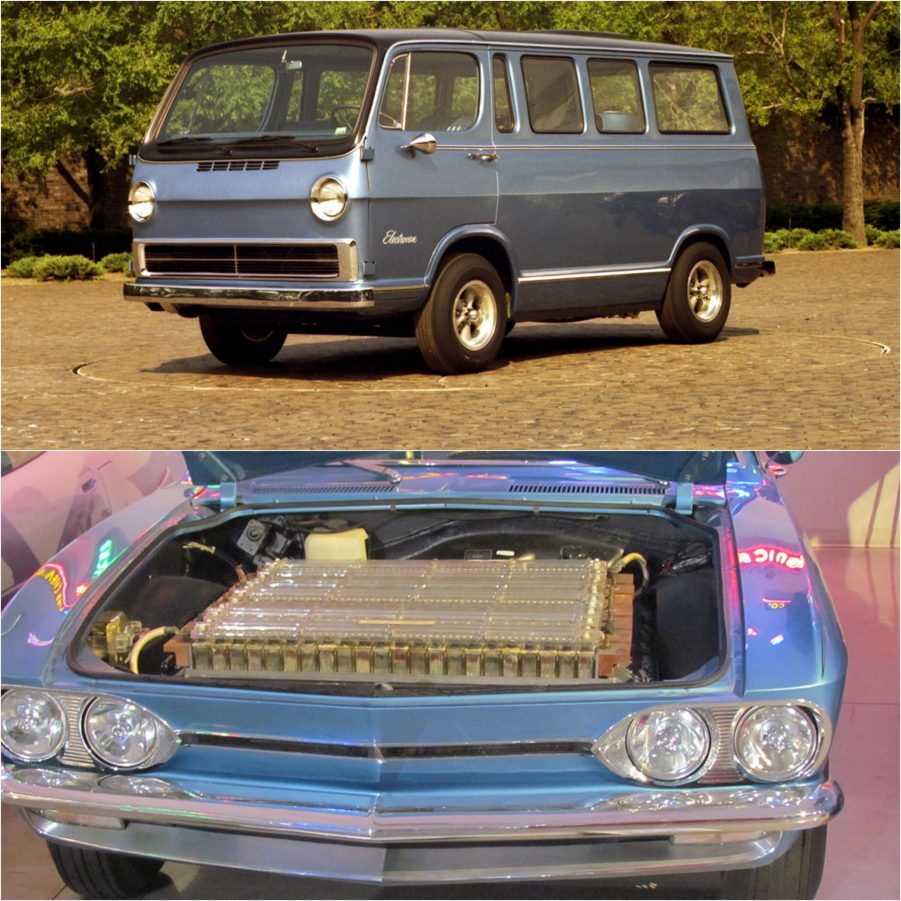
Chevy’s Unusual Electric Cars of the ’60s
The 1960s were a wild time in automotive history. Carmakers were throwing turbine engines into concepts, such as the Chrysler turbine car. Everything was geared toward a brighter, Jetson-like future. But Chevy used this time to become the front runner for all things electric with the Electrovairand Electrovan. And these two models would establish the brand as an electric car authority.
The 1964 Electrovair was Chevy’s first attempt to popularize electric cars
The Chevrolet Corvair was Chevy’s answer to the Volkswagen Beetle: a budget, compact car. The Beetle started at around $1,500 back in 1960, whereas the Corvair started at roughly $2,200. Still fairly cheap, though not quite as wallet-friendly as the Beetle. It also was an “American compact,” about two feet longer and seven inches wider than the Beetle it rivaled.
It even had an air-cooled, six-cylinder boxer engine mounted to the rear, and 15.6 cubic feet of cargo space up front. With room at the front and the back, Chevy saw it as the perfect candidate to electrify.
Rather than an 80 horsepower boxer engine, the Electrovair started a 90 horsepower electric motor, paired with a 450-volt electric battery. Though in 1966, Chevy revealed the Electrovair II, with 115 horsepower and a 532-volt silver-zinc battery. More advanced than its predecessor, the Electrovair could get up to 80 mph. And, when driven at low cruising speeds, could go 80 miles per charge.
Chevy never intended for the Electrovair to become a production car. But it was an example of how electric cars could perform, and an exploration of alternative fuel sources. But Chevy experimented with more than just battery-electric cars, as they happened to invent the first hydrogen fuel cell vehicle just two years later.
The 1966 Electrovan was the first-ever hydrogen fuel cell car
The fuel cell Electrovan project was to match the acceleration, speed, and driving range of a typical van. And after stripping the interior of a GMC Handi-Van, engineers reworked the cabin to incorporate two massive tanks of liquid air and hydrogen. They tucked the tanks between the second and third row of seats, as well as 32 fuel cells under the floor. And while it was the first hydrogen-electric car ever made, it didn’t meet its initial goals.
While the Electrovan could hit a 70 mph top speed, acceleration and range were lacking. It took 30 seconds to get to that 70 mph top speed, and the range maxed out at 150 miles. On top of that, the Electrovan was somewhat dangerous, with the two tanks said to have exploded during tests. It left shrapnel in its wake, and soon enough, the project was canceled altogether.
But at the time, the Electrovan was considered the most advanced electric vehicle ever built. An initial effort to merge the practicality of filling up at the pump with the eco-friendly fuel cell power source. And Chevy is still going toward a zero-emissions future now.
How Electrovair and Electrovan impacted Chevy today

An all-electric Chevy Silverado was recently announced, set to rival the Ford F-150. It’ll ride on their in-house Ultium battery pack, which is also being used in Honda’s upcoming electric cars. However, Chevy is also looking at hydrogen fuel cell solutions for the military, as well as commercial truck use.
You can learn more about the Electrovair and Electrovan, as well as all the other Chevy hydrogen fuel cell and electric cars of yesteryear, on the GM Heritage website. And while it may not have directly impacted Chevy’s electro-future, they served as important stepping stones for the entire automotive industry. Instilling hope that electric cars would, some day, outmatch gas cars. And that day is rapidly approaching.


